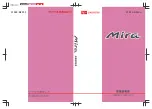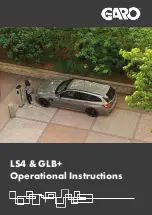
148
Starting and driving
Filling a portable fuel container
Fuel (Gasoline Engine)
Fuel
Use of the recommended fuel is an impor-
tant part of the proper maintenance of your
vehicle.
Gasoline Octane
Use regular unleaded gasoline with a
posted octane of 87 or higher.
If the octane is less than 87, you may get a
heavy knocking noise when you drive. If this
occurs, use a gasoline rated at 87 octane or
higher as soon as possible. Otherwise, you
might damage your engine. A little pinging
noise when you accelerate or drive uphill is
considered normal. This does not indicate a
problem exists or that a higher-octane fuel
is necessary. If you are using 87 octane or
higher-octane fuel and hear heavy knock-
ing, your engine needs service. Although
not required, use higher octane fuel for opti-
mum performance - 93 octane.
Gasoline Specifications
It is recommended that gasoline meet spec-
ifications which were developed by automo-
bile manufacturers around the world and
contained in the World-Wide Fuel Charter
which is available from the Alliance of Auto-
mobile Manufacturers at www.autoalli-
ance.org/fuel_charter.htm. Gasoline meet-
ing these specifications could provide
improved driveability and emission control
system performance compared to other
gasoline.
California Fuel
If your vehicle is certified to meet California
Emission Standards (see the underhood
emission control label), it is designed to
operate on fuels that meet California speci-
fications. If this fuel is not available in states
adopting California emissions standards,
your vehicle will operate satisfactorily on
fuels meeting federal specifications, but
emission control system performance may
be affected. The malfunction indicator lamp
may turn on and your vehicle may fail a
smog-check test. See Service Engine Light
also known as CHECK ENGINE indicator
light on page 58. If this occurs, return to your
authorized Saab dealer for diagnosis. If it is
determined that the condition is caused by
the type of fuel used, repairs may not be
covered by your warranty.
WARNING
Never fill a portable fuel container while it
is in your vehicle. Static electricity dis-
charge from the container can ignite the
gasoline vapor. You can be badly burned
and your vehicle damaged if this occurs.
To help avoid injury to you and others:
• Dispense gasoline only into approved
containers.
• Do not fill a container while it is inside
a vehicle, in a vehicle’s trunk, pickup
bed or on any surface other than the
ground.
• Bring the fill nozzle in contact with the
inside of the fill opening before operat-
ing the nozzle. Contact should be
maintained until the filling is complete.
• Do not smoke while pumping gaso-
line.
NOTICE
Gasolines containing oxygenates, such
as ethers and ethanol, and reformulated
gasolines may be available in your area.
We recommend that you use these gaso-
lines, if they comply with the specifica-
tions described earlier. However, E85
(85% ethanol) and other fuels containing
more than 10% ethanol must not be used
in vehicles that were not designed for
those fuels.
95_US_MY09.book Page 148 Tuesday, April 15, 2008 11:03 AM
Summary of Contents for 2009 9-5
Page 10: ...10 This page has been left blank 95_US_MY09 book Page 10 Tuesday April 15 2008 11 03 AM...
Page 42: ...42 Safety This page has been left empty 95_US_MY09 book Page 42 Tuesday April 15 2008 11 03 AM...
Page 272: ...272 Notes Notes 95_US_MY09 book Page 272 Tuesday April 15 2008 11 03 AM...
















































